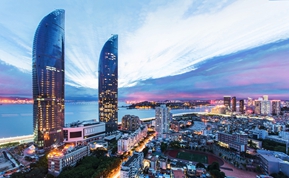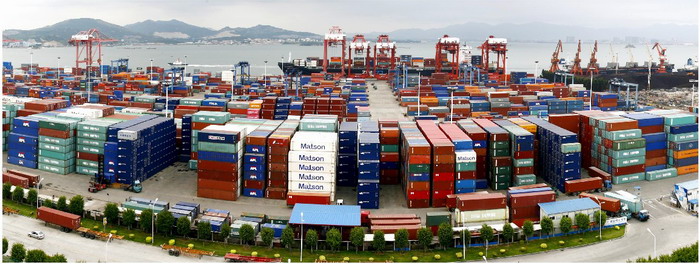Transportation and Logistics
|
The Port of Xiamen is one of the major natural deep-water ports in China. It is an international shipping center in East China and serves as one of China's base ports and container hub terminals. There are 152 regular container shipping routes, including 101 international routes, operating through the port.
Launched by Fujian province on Dec 12, 2018, the Maritime Silk Road project had opened 60 routes covering 27 countries along the road, and had provided about 2,100 shipping services by the end of 2019.
In 2019, container throughput at Xiamen Port in the province exceeded 11 million twenty-foot equivalent units (TEU), up 3.92 percent year-on-year and ranking 14th globally. The cruise passenger throughput of the port reached 413,700 last year, growing by 27.38 percent year-on-year and ranking fourth in China.
Since the launch of direct cargo shipments across the Taiwan Straits in 2008, Xiamen Port has opened the Xiamen-Taichung container direct shipping route, the Cosco Star ro-ro/passenger shipping route, the Xiamen-Taiwan cruise shipping line, and the Xiamen-Penghu passenger shipping route.
As a regional aviation hub in East China, Xiamen Gaoqi International Airport had opened 174 air routes leading to cities on the Chinese mainland, Hong Kong, Macao, Taiwan, Southeast Asia, Japan, South Korea, the United States, and Europe by the end of 2019.
In 2019, the passenger throughput of the airport was 27.41 million, up 3.2 percent year-on-year, and the airfreight throughput dropped by 4.3 percent year-on-year to 330,500 metric tons.
Xiamen is a regional railway transport hub in terms of its handling capacity in both passenger and freight traffic. It boasts Xiamen Railway Station, Xiamen North Railway Station, the large freight yard in front of Xiamen Rail and Dongfu Railway Marshaling Yard, and is connected to the national railway network through the Yingtan-Xiamen, Fuzhou-Xiamen, Longyan-Xiamen and Xiamen-Shenzhen railways.
Xiamen is also a land transport hub in southwest Fujian, given the various highways running through it, including the Shenyang-Haikou, Xiamen-Chengdu and Xiamen-Anxi expressways, as well as national highways 319 and 324. Container freight services between Xiamen, Shenzhen and Hong Kong are flourishing and convenient.
Xiamen houses four logistics parks: Haicang, Modern, Xinlin and Liuwudian logistics parks. Fujian E-port covers all the main logistics operation points in Xiamen customs area and all ports in Fujian province. Organizations and agencies relevant to customs clearance procedures – CIQ (Customs, Immigration and Quarantine), station of exit/entry frontier inspection, logistics parks and centers, wharfs, storage yards, shipping agencies, cargo agencies, air cargo stations, customs brokers and trading companies – are all networked and their procedures therefore streamlined.
Xiamen is one of China's nine prioritized logistic zones, a regional logistics hub on the southeast coast of China, and a first-rate city in terms of logistic parks layout.
Why Xiamen
-

Xiamen is one of the most economically competitive cities in China and was one of the first Special Economic Zones on the Chinese mainland. As a vice-provincial city independently listed on the State development plan, it has provincial-level authority in economic administration and local legislative power. In 2010, the Xiamen SEZ was expanded to cover the entire municipality. Today, Xiamen is a modern and international port city.

